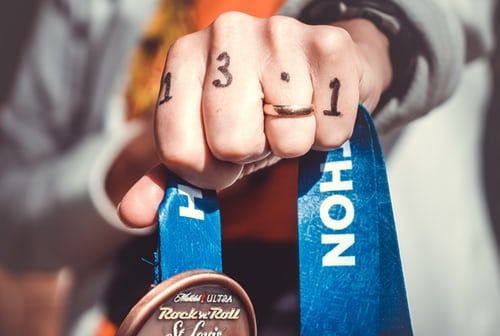Those who run marathons understand completely that 26 miles and 385 yards is a very long way. The race is exciting, grueling and always mentally and physically challenging, but you hang in there, push on and finish.
These days, marathon running around the globe is hugely popular, and your options are many. That is why the bling factor has come into play for finisher’s medals.
For decades, it was all about the bib, the route and the commemorative tee-shirt, but times have changed very quickly as marathon organizers look for ways to attract runners.
Marathoners today expect something unique when they finish the race. A finisher’s medal symbolizes the guts, determination and pride to go the distance, and if it’s a showy piece, runners go wild.
Here are five interesting facts about marathon finisher’s medals:
1. NYC Marathon Started It
Back in the 1970s, the New York City Marathon began awarding finisher’s medals to every participant who completed the race, and it became a tradition that spread very fast across the United States.
For the Boston Marathon, the world’s oldest annual marathon, race organizers followed suit with the road race ritual and started handing out finisher’s medals in 1983 that consisted of a pewter medal with no ribbon attached.
2. Medal Size Has Grown
Over the years, marathon finisher’s medals have morphed into something a lot larger than the traditional half-dollar size medals we were all used to seeing back in the day.
The main reason for this is to lure runners to a city’s marathon so that participants can go home with a blinged-out medal that displays visual significance. In other words, large medals equal excellent marathon race marketing.
Finishing the 26.2-mile race is a major accomplishment, and having a medal with a significant size or weight matters to many.
3. Some Have Iconic Symbols
The Philadelphia Marathon introduced a famous symbol for the country and city a few years ago, and runners have expected to see the design on their finisher’s medal every year now.
The iconic Liberty Bell has proven to be a crowd favorite and a unique medal component that means a lot to runners who have just completed the grueling 26-plus-mile journey.
The 2018 marathon finisher’s medal came with a 3-D replica Liberty Bell along with the famous crack that actually rang.
4. Medals That Have Practicality
Modern times mean marathon finisher’s medals with a practical purpose. Decades ago, you wore your medal around your neck after completing the race. After, you probably hung it or arranged it in your home in a special place and added it to your collection.
Marathon runners today often go home with a finisher’s medal that can be used for something else.
For example, the Foot Levelers Blue Ridge Marathon Series has earned its title as “America’s Toughest Road Marathon” with more than 7,430 ft. in elevation change.
Marathon finishers receive a handsome medal that doubles as a belt buckle.
Other finisher’s medals feature working bottle openers and wine bottle cork stoppers.
5. Finisher’s Medals Are Here To Stay
Let’s be honest. For the men and women who participate in this long race of 26 miles plus 385 yards, it’s an accomplishment in every sense of the word no matter where you’re running around the globe.
It could be 90 degrees of blistering heat or a cold rainy day with chilly winds, but you persevere. It doesn’t matter what place you come in. All that matters is that you cross the finish line.
A race volunteer then drapes a medal around your neck, and it serves as a tangible reminder of the months of training, dedication and determination you made for completing the course.
Marathon finisher’s medals have skyrocketed in popularity and grow more creative in shape, size and design each passing year.
Your medal becomes a badge of honor.
What’s not to love?




